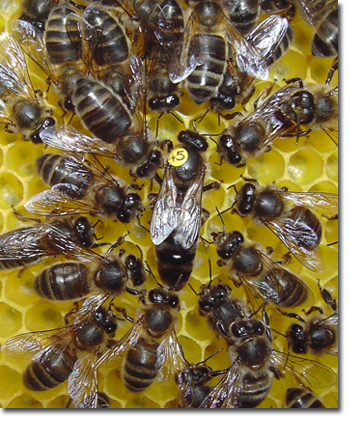
NEW YEAR NEW SICAMM
SICAMM is about to become a federation of European Dark Bee organisations. A team of mellifera enthusiasts has worked hard since september 23 and will be presenting the plans at a Kick-Off Meeting on January 11th '24.
What is Apis mellifera mellifera?
Apis mellifera mellifera, Linnaeus 1758 is a subspecies and northern geographical race of Apis mellifera, the western honeybee.
It may be subdivided into many local ecotypes. Its various vernacular names include:
“Dark European Honeybee” (English),
“L’abeille noire” (French),
“Die dunkle Biene” (German) and
“Det mörka Nordiska Biet” (Swedish).

A.m.m. queen and court, Switzerland. Queen mated in apiary with drones of the same strain as those mating with her mother and grandmother, which were certified 100% A.m.m. by DNA microsatellite analysis.
Apis mellifera mellifera is distinguished from other subspecies of the honey bee by
a) Morphological characters, including colour, size, wing venation, abdominal hair length;
b) Genetic characters identifiable by DNA analysis;
c) Behavioural characters, including colony size and development, longevity, pollen collection.

The indigenous range of Apis mellifera mellifera stretches from the Atlantic seaboard of Norway, Britain, Ireland and France eastward across Western, Northern and Central Europe north of the Alps and Carpathians to the Urals and beyond.
The natural range of A.m.m. coincides with the 15-20° zone. (Copyright D.J.Pritchard).
For an article entitled “A review of methods for discrimination of honey bee populations as applied to European beekeeping”: view
All content © SICAMM 2021, all rights reserved | About | Privacy Policy | Legal | Connect